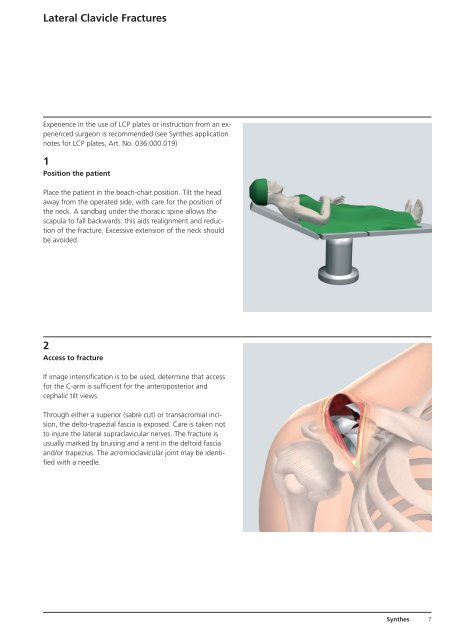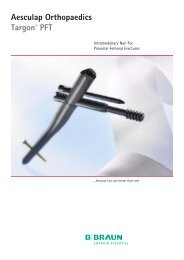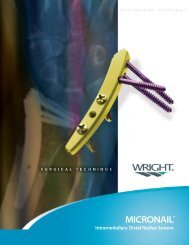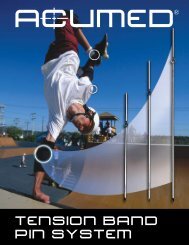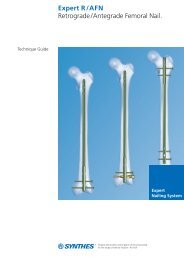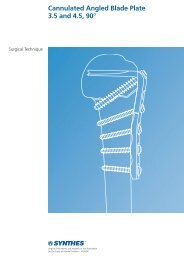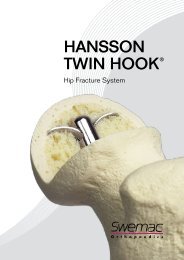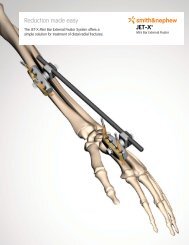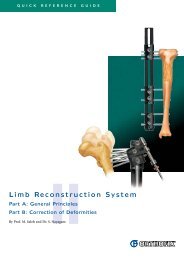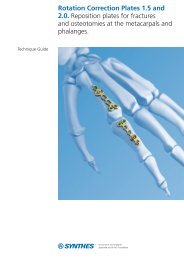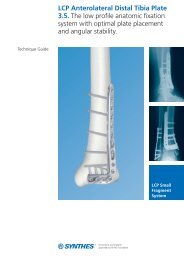LCP Clavicle Hook Plate. The fixation system with ... - Osteosyntese
LCP Clavicle Hook Plate. The fixation system with ... - Osteosyntese
LCP Clavicle Hook Plate. The fixation system with ... - Osteosyntese
Create successful ePaper yourself
Turn your PDF publications into a flip-book with our unique Google optimized e-Paper software.
Lateral <strong>Clavicle</strong> Fractures<br />
Experience in the use of <strong>LCP</strong> plates or instruction from an experienced<br />
surgeon is recommended (see Synthes application<br />
notes for <strong>LCP</strong> plates, Art. No. 036.000.019)<br />
1<br />
Position the patient<br />
Place the patient in the beach-chair position. Tilt the head<br />
away from the operated side, <strong>with</strong> care for the position of<br />
the neck. A sandbag under the thoracic spine allows the<br />
scapula to fall backwards: this aids realignment and reduction<br />
of the fracture. Excessive extension of the neck should<br />
be avoided.<br />
2<br />
Access to fracture<br />
If image intensification is to be used, determine that access<br />
for the C-arm is sufficient for the anteroposterior and<br />
cephalic tilt views.<br />
Through either a superior (sabre cut) or transacromial incision,<br />
the delto-trapezial fascia is exposed. Care is taken not<br />
to injure the lateral supraclavicular nerves. <strong>The</strong> fracture is<br />
usually marked by bruising and a rent in the deltoid fascia<br />
and/or trapezius. <strong>The</strong> acromioclavicular joint may be identified<br />
<strong>with</strong> a needle.<br />
Synthes 7


